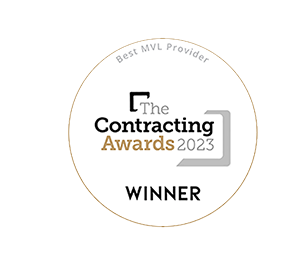Limited Company Liquidation
Limited company liquidation is a formal insolvency procedure used to close down a company. There are different ways of liquidating a limited company, and the best option will depend on whether the company is solvent or insolvent. Company directors can liquidate voluntarily, or the courts can force closure to pay outstanding debts.






How do you liquidate a limited company?
- The first step before liquidating your company is to instruct a licensed insolvency practitioner. They will assess your company’s situation and help you to handle everything legally. If your limited company is insolvent (it cannot pay its debts), usually it must stop trading
- Once appointed, the liquidator will take over communicating with HMRC, Banks, and all other creditors. Where beneficial, they will sell company assets to pay the debts as far as possible, or if the company is solvent, the remaining assets will be distributed among the shareholders.
- Once the limited company liquidation has been completed, the liquidator will close it and file the necessary documents leading to the company’s removal from the register.
Members’ Voluntary Liquidation (MVL)
If the company is solvent and the Directors wish to shut it down, an MVL is a compliant and often a tax-efficient way to close and liquidate assets.
Creditors’ Voluntary Liquidation (CVL)
When an insolvent company closes down voluntarily, this can help directors avoid wrongful trading claims and manage creditors.
Compulsory Liquidation
If a company cannot pay its debts, a creditor can force liquidation through a winding-up petition, and the courts force the company into liquidation.
How much does it cost to liquidate a company?
The cost of liquidating a limited company depends on whether it is solvent or insolvent. Because solvent liquidations (MVLs) can be a more straightforward closure process, the cost of an MVL is usually more affordable than other insolvent closure options.
For insolvent companies, the cost of a CVL
starts from £3,000 for our pre-liquidation fees.
Once the company has been put into liquidation, there will be post-appointment fees, which vary case by case. Once we are aware of your company’s situation, we will assess the costs, which usually cover:
- Processing creditor claims.
- Valuing and selling all company assets.
- Investigations into the running of the company and conduct of all directors running up to the liquidation process.
- Reporting on the liquidation process and current status.
- Fair distribution of liquidation proceeds to creditors.


How do you pay for a company liquidation?
The liquidator usually covers the liquidation costs by selling company assets. Directors may need to contribute personally to the pre-liquidation fees if there are no assets to sell. If this isn’t an option, we can discuss the best affordable insolvency routes with you.
How Long Does the Liquidation Process Take?
Once you have instructed a licensed insolvency practitioner, liquidation can begin within a few weeks. Depending on the complexity of the case, the full process, including selling assets and closing the liquidation, usually takes at least several months.


Which Liquidation Process Is Right for Your Business?
If your company is insolvent and unable to recover, a CVL is the best course of action. If you’re closing a solvent company, an MVL can provide tax advantages.
Are Directors Personally Liable for Company Debts?
In most cases, directors of a limited company aren’t personally responsible for debts unless they’ve signed a personal guarantee, engaged in wrongful trading, or misused company funds. The liquidation process ensures that debts are dealt with fairly, and creditors can’t chase directors for repayment unless they have a direct claim against the directors.

What Happens After You Liquidate a Company?
Shortly after a company’s liquidation is concluded, the company is removed from the Companies House register. As long as there are no misconduct issues found by the liquidator, you can start trading a new company as a director. But if it was an insolvent liquidation, there are restrictions on what you can name your new company.
Apart from some special circumstances, for five years after the start of the liquidation, Directors of the liquidated company can’t be a director of a company, or act in ways including managing a business, with the same or a similar name to the liquidated company.
